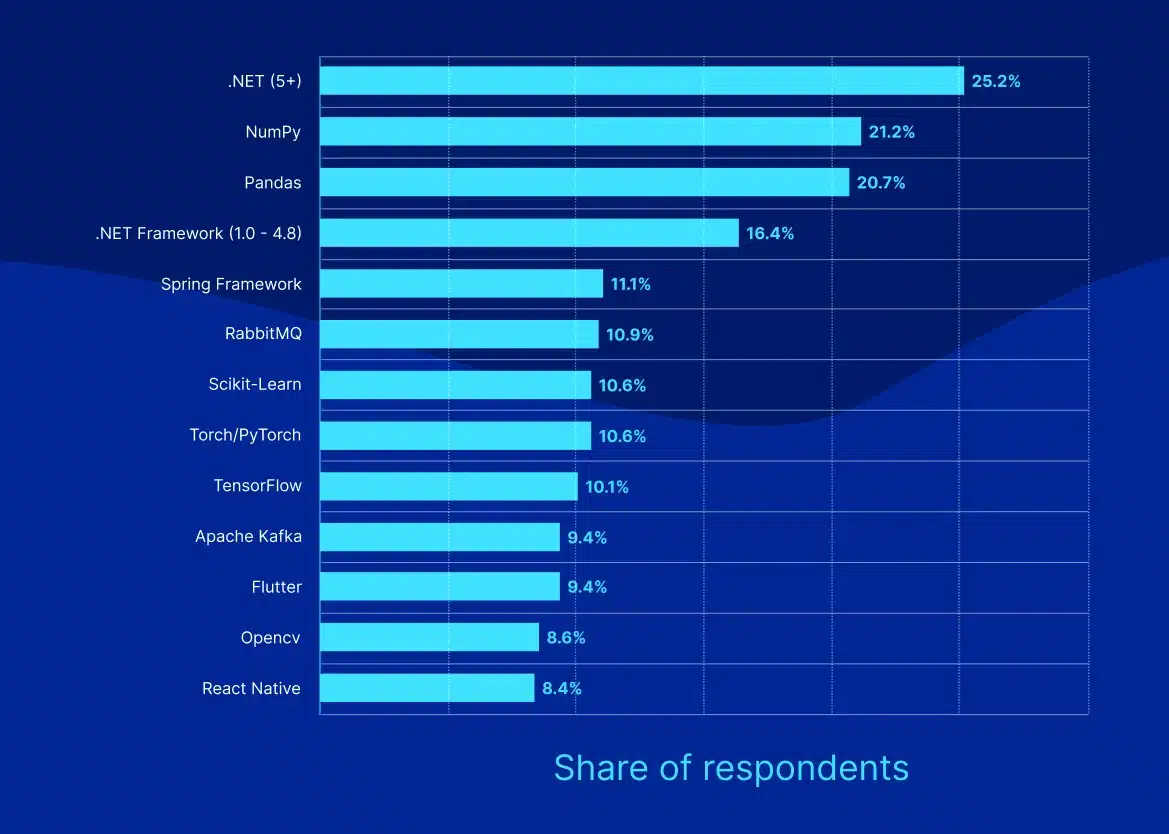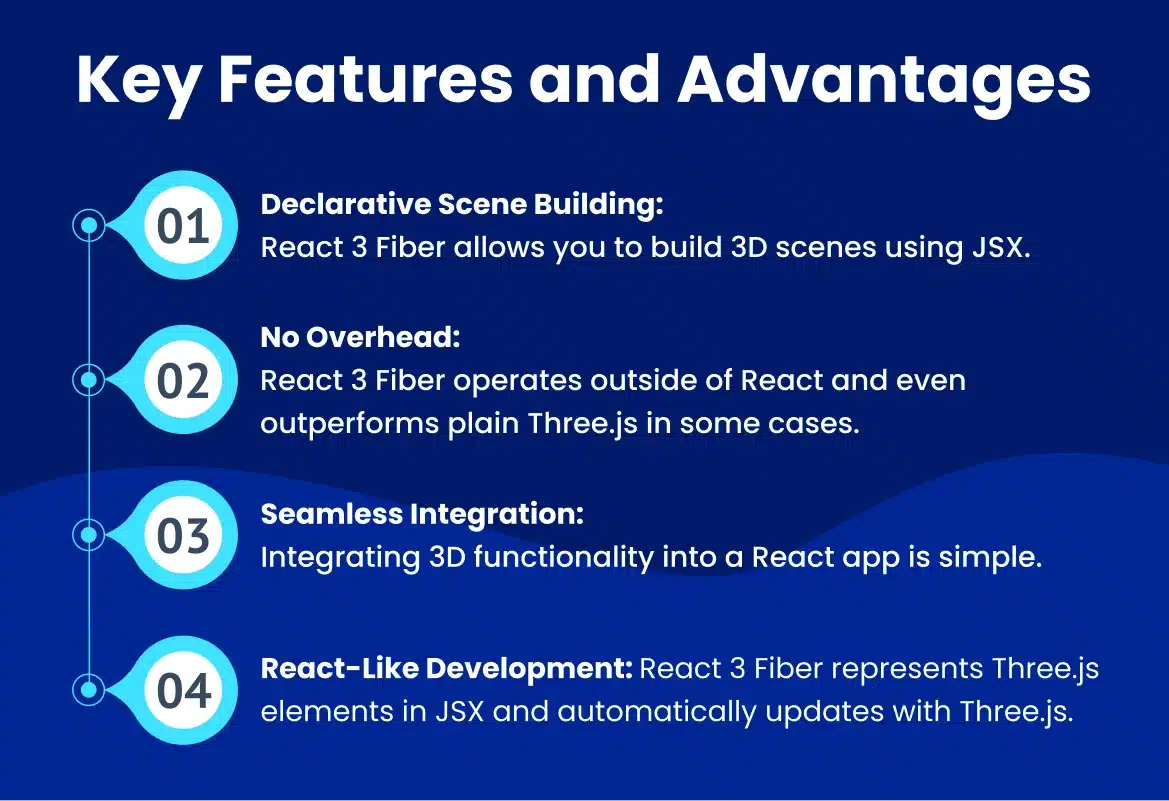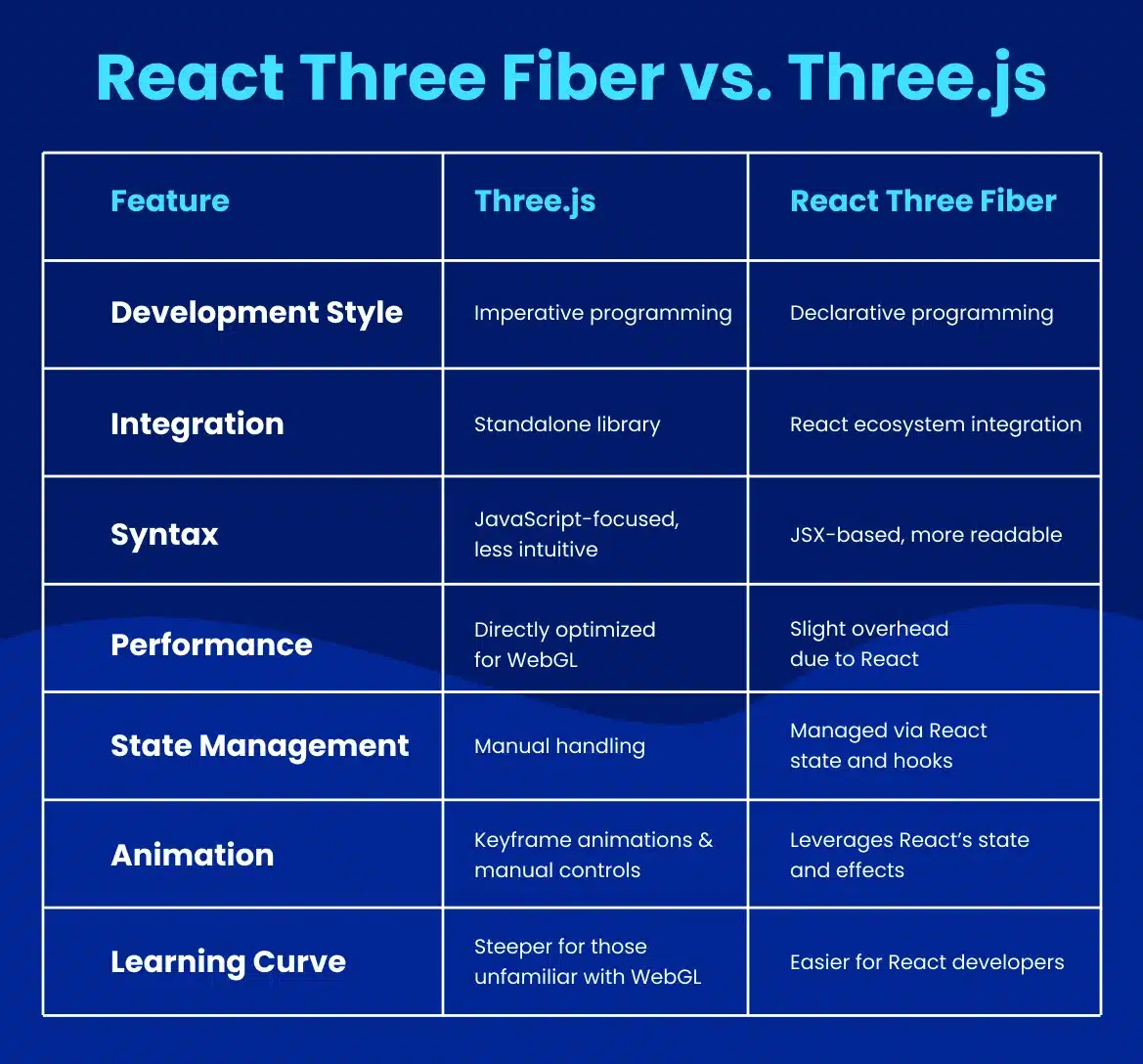Table of content
However, one of its latest frameworks is transforming the creation of dynamic 3D graphics—React 3 Fiber. From Netflix to WhatsApp, every application you use is being built using React 3 Fiber.
In this blog, we will explore the reasons why React 3 Fiber is considered the best choice for 3D product development, particularly for developers familiar with the React ecosystem.
What Is React 3 Fiber?
React Three Fiber is essentially a React renderer for Three.js. If you’re unfamiliar, Three.js is a powerful JavaScript library for creating 3D graphics and animations in the browser. React 3 Fiber allows developers to build 3D scenes declaratively using reusable, self-contained components. These components can react to state changes, participate in the React ecosystem, and seamlessly integrate with other React components
Key Features and Advantages
- Declarative Scene Building: Just like React enables UI component composition, React 3 Fiber lets you create reusable 3D components. You construct your 3D scene using JSX, similar to how you build UI components in React. This means you can use props, state, and React hooks with your 3D objects.
- No Overhead: React 3 Fiber doesn’t introduce any additional overhead. Components render outside of React, and it outperforms plain Three.js in certain scenarios due to React’s efficient scheduling abilities.
- Seamless Integration: If you’re already building a web application in React, adding 3D functionality becomes straightforward. You can use the same state management libraries, data fetching abstractions, and pass data and props between your 3D scene and other parts of your React project.
- React-Like Development: React 3 Fiber expresses Three.js concepts in JSX. For example, a <mesh /> component dynamically becomes a new THREE.Mesh(). This means that as Three.js evolves, React 3 Fiber automatically reflects those changes without requiring updates to the library itself.
React Three Fiber vs. Three.js
When diving into 3D graphics on the web, developers often choose between two powerful tools: React Three Fiber and Three.js. While both libraries allow for the creation of interactive 3D experiences, they cater to different needs and development styles. Understanding the key differences and advantages of each can help you make an informed decision for your next project.
React 3 Fiber vs Three.js: Use Cases
When considering React Three Fiber and Three.js for 3D development, it’s essential to understand the specific use cases where each framework shines. Both tools have their strengths, catering to different project requirements and developer expertise. Here’s a closer look at when to choose each one:
Three.js Use Cases
1.1 Gaming and High-Performance Applications:
- Control and Performance: Three.js is ideal for developers who require complete control over 3D graphics rendering and optimization. Its low-level access to WebGL allows for highly performant applications, making it a preferred choice for complex gaming environments, where frame rates and graphical fidelity are paramount.
- Custom Rendering Techniques: For projects that need specific rendering techniques, such as custom shaders or advanced post-processing effects, Three.js provides the flexibility to implement these features directly.
1.2 Data Visualization: Three.js enables developers to manipulate 3D objects precisely when creating detailed data visualisations. Its capability to render intricate models and handle large datasets makes it suitable for applications in fields like finance, scientific research, and engineering.
1.3 Architectural and Product Visualization:Three.js excels in scenarios that require realistic representations of architectural designs or product prototypes. Its ability to handle complex geometries and textures allows architects and product designers to create immersive walkthroughs and interactive presentations.
2. React Three Fiber Use Cases
2.1 Interactive Dashboards and Applications: For React developers looking to integrate 3D elements into existing applications, React Three Fiber provides an intuitive way to build interactive dashboards. Using familiar React concepts, developers can create engaging visualizations that respond to user interactions without delving deeply into WebGL.
2.2 Educational Tools: React Three Fiber is perfect for educational applications that require 3D models to illustrate complex concepts. Its declarative nature allows educators to create interactive simulations that enhance learning, whether in classrooms or online courses.
2.3 Lightweight Games and Prototypes: When developing lightweight games or prototypes, React Three Fiber allows for quick iterations and testing. The ability to easily manage state and props makes it easier to create engaging gameplay mechanics and visual experiences without the overhead of more complex frameworks.
2.4 Augmented Reality (AR) and Virtual Reality (VR): React Three Fiber can be integrated with AR and VR libraries, making it an excellent choice for building web-based AR/VR experiences. This flexibility allows developers to create immersive applications that can be accessed directly from web browsers.
Final Thought
As the demand for immersive 3D experiences continues to rise, React 3 Fiber is a top choice for developers. Its seamless integration with React and declarative programming style streamline the 3D development process, allowing for the creation of reusable components. This framework enhances performance while leveraging React’s state management and lifecycle methods, making it easier to build interactive applications. By reducing the learning curve for React developers, React Three Fiber ensures that teams can quickly implement 3D features without deep knowledge of WebGL. Embracing React Three Fiber positions developers to create engaging and innovative 3D applications that resonate with users.



